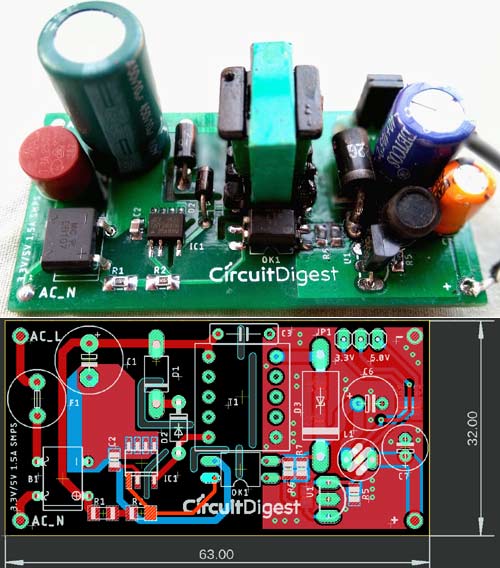

This generally occurs when traces are not wide enough, although you need to be careful when making your traces wider (see the section on Impedance Contorl in PCB Design below). When this happens, there are certain signaling problems that will be noticed if a board is not designed using high speed PCB design rules. In a high speed PCB, the rise time is fast enough that the bandwidth for the digital signal can extend into the high MHz or GHz frequencies. There is no clear delineation between high speed and low speed PCBs, and new designs with advanced components should be designed with high speed board design guidelines in mind. However, a high speed design has nothing to do with clock rates and has everything to do with edge rate, or the rate at which the signal level swings between digital states. When newer designers think about the term "high speed," they are likely to default to clock rate. In this case, you’ll need to pay attention to the following design points to ensure your high speed signals are not heavily distorted during routing. In many cases, you won’t be able to take such a simple approach, and everything will need to be integrated into a single PCB. In this case, you should also pay attention to the signaling standards (SPI, UART, I2C, etc.) used in the board to ensure signals are not heavily degraded during routing. If you can layout your peripherals on top of a development board, and the device works properly, then you can likely layout your new board however you like as long as you follow the stackup design in your development board. This is one reason component manufacturers release development boards for their components, particularly FPGAs, MCUs, RF components, and many other components. However, high speed devices generally won’t work on a breadboard. If you can layout your new device on a breadboard, and it works perfectly, then you can probably layout your board in any way you like and the finished PCB will still work.

When Do High Speed PCB Design Rules Become Important?Ī good way to check whether you need to concern yourself with high speed board design guidelines is to layout your new device on a breadboard or a development board. Here are the important high speed PCB design guidelines to remember when working with fast edge rates.

If you’ve never built a digital design using components with high edge rates, then fear not, there are some simple steps you can take to ensure signal integrity in your next board. Today, any designer building a modern device for advanced applications should understand these points and should implement the right high speed board design guidelines. This placed less emphasis on things like impedance control, terminations, crosstalk, and power integrity. Older devices used slower edge rates, slower clock rates, higher signal levels, and higher noise margins. These days, every device can be considered a high speed PCB.


 0 kommentar(er)
0 kommentar(er)
